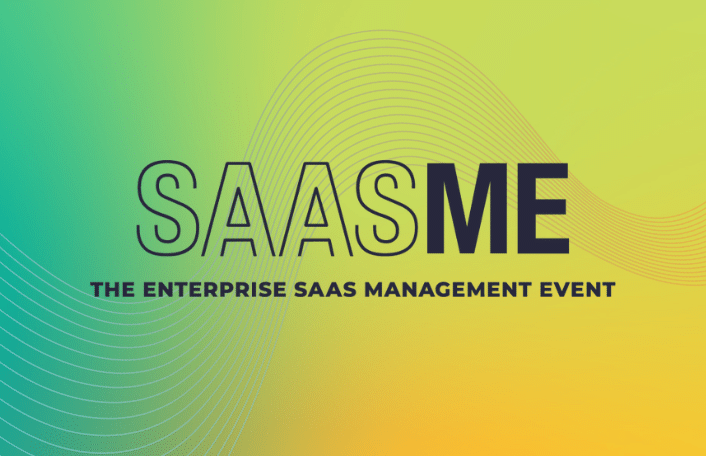
How to Crawl-Walk-Run Managing SaaS in IT with Trenton Cycholl (ModMed)
Table of Contents ToggleEpisode SummaryGuest SpotlightEpisode HighlightsUsing a Tiering Framework Helps...
Back
Back
Search for Keywords...
Blog

Table of Contents
No two organizations are the same, but one thing most have in common is the adoption of SaaS tools. Gartner projections show SaaS spending growing to more than $197B in 2023.
This rapid expansion of a relatively new technology leaves many organizations resorting to outdated methods of management as adoption grows faster than operational support. Regardless of the industry, organizations can significantly benefit from appropriate SaaS controls and effective management practices.
The question becomes: Whose job is it to oversee this process? The answer may just be the IT professional seeking career advancement. In this guide, you will discover the value of SaaS management for advancing an IT career.
SaaS currently occupies the most significant section of the cloud-based software market, a trend that shows no signs of slowing. With such massive growth potential, any organization that can implement SaaS management stands to improve software value significantly while gaining a competitive edge.
Businesses are shifting from license-based software to subscriptions. In 2022, for the first time ever, IDC found that more money was spent on SaaS than on-premise software. And by 2026, SaaS spending is expected to comprise two-thirds of all enterprise application revenue. This means that license-based software consumption will further plummet, while SaaS and subscription-based cloud consumption models continue their rise.
Despite the rapid advancement of SaaS, a surprising number of organizations rely on spreadsheet-driven methods for tracking applications and manual efforts for identifying redundancies and spending overlaps, or worse yet, organizations do not specifically track this software investment category.
This outdated process takes considerable labor hours, invites undue risk, and carries the potential for error. Adopting effective SaaS management practices presents a unique opportunity for organizations to understand and optimize this portion of the technology stack. And for the IT professional who spearheads that initiative, introducing SaaS management a unique career opportunity to both identify and solve a growing challenge. As they say, “where there’s a will, there is a way.”
Understanding how technology impacts every area of business and how it can be utilized to the fullest potential is of central concern. In fact, digital transformation was cited as one of the top three investment priorities for CIOs, according to Gartner. Organizations that embrace innovation set the standard for the future. Powerhouses gain their status by using change to their advantage.
However, whether they are slow to adopt mobile-first enterprise technologies or failing to engage audiences (employees, customers, prospects, partners, and talent), according to Forrester data, only 21 percent of companies believe they’ve reached their digital transformation goals.
However, even as these issues continue to rise, many enterprises don’t have the support and logistical processes in place to make these cloud-based software decisions or move toward effective SaaS management practices.
IDC notes that business units now drive 70% of application spending, not IT. This spending is increasingly decentralized and occurs even at the employee level: Zylo data shows that one in five employees expense digital tools. Altogether, spending on digital tools and services can translate to as much as 38% of total supplier spending for some companies.
IT leaders willing to nail down effective SaaS management practices will help organizations gain a comprehensive picture of how this quickly evolving technology impacts their business. Developing an ongoing record is essential to identify where improvements can be made so that innovation is a continuous process.
Very few businesses find success by sticking to old business models. Businesses that thrive are those willing to embrace changes that lead to operational excellence.
Consider the famed failure of Blockbuster and its inability to embrace the changing landscape. A company that once dominated the video retail market, Blockbuster shunned the opportunity of online business and eventually filed bankruptcy as a small niche competitor overtook the video rental space. The competitor, otherwise known as Netflix, is now a primary player in the video rental market.
Embracing formal SaaS management is a must in today’s digital-forward businesses, but it’s a new undertaking for most. Expansion into new categories, although somewhat intimidating, can yield a significant return. With large enterprises bringing in as much as a dozen new applications every month, the potential for gain in this uncharted territory is tremendous.
Encouraging SaaS management can help provide much-needed insight into the value and ROI of technology.
The persistent usage of legacy practices has created a lack of visibility into total tech usage. Zylo data shows that more than 55% of all SaaS application transactions are not accurately tagged as “software,” which makes tracking and attribution difficult.
As IT has moved to a more integral function in organizations, a problematic lack of procurement oversight by IT teams is becoming more common. To fully protect and manage IT software assets, organizations need transparency to enable better communications between IT teams and business units.
SaaS management is the bridge that enables collaboration. To fully understand total SaaS usage, IT professionals will have to engage individuals across an organization and collaborate with teams ranging from executives to entry-level personnel.
This collaboration enables the following:
Cost control: The most apparent benefit to centralizing SaaS management comes with cost control. Accurate reporting and cost attribution can streamline business operations and reduce technology spend.
Compliance: Zylo data shows that one in five employees purchase SaaS applications via expense on average. Without IT oversight, it’s challenging to implement necessary security protocols. Gaining full visibility into the tech stack allows for greater security controls and compliance.
Communication: A comprehensive understanding of full SaaS ownership enables effective collaboration with executive leaders, business units, and contract renewal representatives.
Consolidation: Currently, more than 70% of application spending is sourced in LOB budgets, making it difficult to track and monitor. Centralization of SaaS subscriptions under a manager allows for better governance.
Clarity: Seeing all the details on SaaS, including contract details, usage metrics, total cost, and redundancies, enables informed decisions. With such high costs to help keep critical applications running in the stack, full visibility is a huge asset for any organization.
Pulling together a transparent picture of full application spend and usage is a genuine team effort, and the person heading that charge illustrates competence in leadership, collaboration, and project management— the traits many organizations view as ideal for advancement.
With enterprises still leaning heavily on manual tracking and compartmentalization of departmental tools, it is difficult to gain a full picture of organization-wide SaaS use. IT leaders who can gain full visibility of the stack gain a competitive edge over others by illustrating a honed business sense for operational needs and the ambition it takes to seek out innovative solutions.
An effective Saas Manager will be able to:
—
Embrace a career in SaaS Management and be the leader your organization needs today. Zylo enables innovative IT leaders to take full control of SaaS. Contact us today for a free demo.

Table of Contents ToggleEpisode SummaryGuest SpotlightEpisode HighlightsUsing a Tiering Framework Helps...

Table of Contents Toggle1. Understand the Need for SaaS Management2. A...

Table of Contents ToggleSaaSMe 2024 Takeaway #1: Change Your Mindset, Or...

Table of Contents ToggleWhy Usage Data Is Important Underutilized SaaS Rationalizing Overlapping AppsIdentify...
| Cookie | Duration | Description |
|---|---|---|
| cookielawinfo-checkbox-analytics | 11 months | This cookie is set by GDPR Cookie Consent plugin. The cookie is used to store the user consent for the cookies in the category "Analytics". |
| cookielawinfo-checkbox-functional | 11 months | The cookie is set by GDPR cookie consent to record the user consent for the cookies in the category "Functional". |
| cookielawinfo-checkbox-necessary | 11 months | This cookie is set by GDPR Cookie Consent plugin. The cookies is used to store the user consent for the cookies in the category "Necessary". |
| cookielawinfo-checkbox-others | 11 months | This cookie is set by GDPR Cookie Consent plugin. The cookie is used to store the user consent for the cookies in the category "Other. |
| cookielawinfo-checkbox-performance | 11 months | This cookie is set by GDPR Cookie Consent plugin. The cookie is used to store the user consent for the cookies in the category "Performance". |
| viewed_cookie_policy | 11 months | The cookie is set by the GDPR Cookie Consent plugin and is used to store whether or not user has consented to the use of cookies. It does not store any personal data. |
